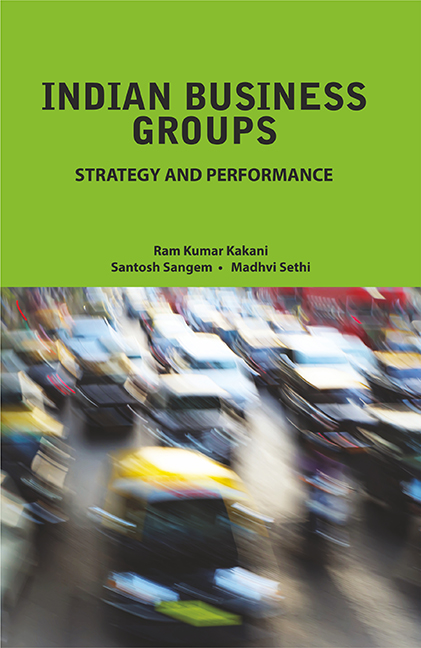Book contents
- Frontmatter
- Contents
- List of Tables and Figures
- Preface
- Acknowledgements
- 1 Introduction to Business Groups and their Strategies
- 2 Business Groups across the Globe
- 3 Product Diversification and Performance: Measurement and Historical Relationship
- 4 Conceptual Framework and Research Methodology
- 5 Empirical Results and Managerial Implications
- 6 Case Analyses of Business Groups' Strategies
- 7 Summary of the Work
- References
- Index
- About the Authors
7 - Summary of the Work
Published online by Cambridge University Press: 13 July 2022
- Frontmatter
- Contents
- List of Tables and Figures
- Preface
- Acknowledgements
- 1 Introduction to Business Groups and their Strategies
- 2 Business Groups across the Globe
- 3 Product Diversification and Performance: Measurement and Historical Relationship
- 4 Conceptual Framework and Research Methodology
- 5 Empirical Results and Managerial Implications
- 6 Case Analyses of Business Groups' Strategies
- 7 Summary of the Work
- References
- Index
- About the Authors
Summary
“If human beings are not drowned,’ asked the little mermaid, ‘Can they live forever? Do they never die as we do here in the sea?” – The Little Mermaid,a fairy tale by Hans Christian Andersen.
What are business groups?
Business groups are a collective network of legally independent firms whose strategic and operating decisions are controlled by either members of a family or group of families. These families have control over the decision-making of these firms by virtue of holding at least a significantly influential ownership stake. Part of the ownership stakes in these business networks are usually held by the family through investment firms, trusts, or foundations set up by them with cross-holdings in affiliates making up the remaining group ownership share. The primary investment firm/trust/foundation in most cases provides direction for/controls the overall activities of the group firms. Industrial activity in a large number of countries continues to be dominated by such business groups.
They often diversify across different product lines with many divisions under them, similar to the U.S. conglomerates. In India, for instance, the Gautam Thapar Avantha group controls a host of firms predominantly in electrical and chemical industries. Another example is the Tata group controlled by the House of Tatas, operating in diverse product portfolio encompassing steel to software to salt.
Product focus based on strong core competencies combined with international diversification has been the success mantra, propounded by academicians and consultants alike. This strategy is adopted by many successful developed country transnational corporations such as Coco-Cola, Microsoft, Lafarge, and Pfizer, especially during the last three decades of increasing globalization. Contrary to some recent theories suggesting product (unrelated) diversification as a success mantra in the emerging markets vis-à-vis focused strategies as success mantra in the developed world, most developing country business groups adopting the focus strategy were also successful. Large number of business groups, which diversified more and more claiming synergies and other benefits found such benefits to be either illusory or over-rated, leading to erosion in shareholder wealth. The recent problems of big unrelated conglomerates in developing nations such as Daewoo in South Korea, Astra in Indonesia are but some of the examples that indicate all is not well with highly diversified unrelated conglomerates.
- Type
- Chapter
- Information
- Indian Business Groups: Strategy and Performance , pp. 217 - 230Publisher: Foundation BooksPrint publication year: 2015

